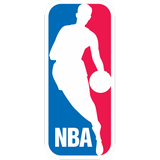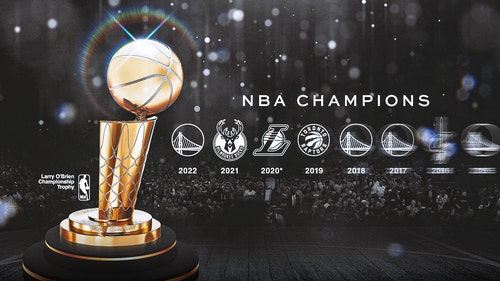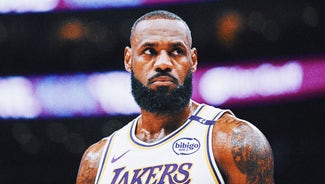
Minus top pick, rookie class still rocks
Much like a rustic diner offering five decaying-Naugahyde booths and a spatula-wielding geezer named Earl, the NBA's current rookie class certainly seems better than we expected.
OK, so expectations were modest. On draft night and even through summer-league play, experts touting first-year employees were anticipating big things from overall No. 1 pick Blake Griffin and little else. Then someone forgot to park that L.A. Clipper karma and Griffin's knee crashed. Now he's done for the season.
But several interesting developments started to occur in the weeks following Griffin's bad landing. According to educated eyeballs and savvy numbers-crunchers, the rookie class of 2009-2010 began to produce like overachieving kids in a public-TV documentary. It began when Milwaukee Bucks point guard Brandon Jennings demonstrated that crazy quickness and appreciable skills go a lot farther in the NBA than they do in the rigid world of European professional hoops.
Just months after studying abroad (and majoring in humility), Jennings dropped a rookie-record 55 points against the Golden State Warriors. Based on the exchange rate, scoring 55 on Don Nelson's Warriors is worth about 30 points elsewhere, but the salvo cast Jennings as the early leader to claim a Rookie of the Year statue that everyone assumed Griffin would own.
Unfortunately, the 55 also accelerated expectations for the young lefty, who is giving the Bucks an average of 18 points per game, but has dipped below 40-percent shooting from the field. He's receiving much more attention from opposing defenses and now is playing without Michael Redd riding shotgun. In his last three games, Jennings has averaged just under 10 points and missed 73 percent of his shots.
"Oh, I'd still take him," said one NBA personnel sharpie whose team didn't have that opportunity during last June's NBA Draft. "Before you ask, I had no idea he'd be able to do what he's done this fast. We all knew he was quick as a blink and had a world of talent. But sometimes it takes the right opportunity at the right time."
Ah, yes ... timing and opportunity.
While this season's stronger-than-anticipated rookie class has several players in that category, our next stop should be Sacramento, where Tyreke Evans now is the favorite for the ROY hardware. As one of John Calipari's dribble-drive Memphis Tigers, the 6-foot-6 Evans was hustled into the role of freshman point guard because the slick-thinking coach had nobody else capable of breaking down defenders.
The one-and-done Evans is strong, quick and decisive off the dribble, traits that inspired first-year Kings coach Paul Westphal to use him on the ball, too.
That seemed like quite the work in progress until star swingman Kevin Martin was injured, coaxing Westphal to use Evans in more of a scoring role. While he still has the ball much more often than Beno Udrih, Evans looked less comfortable when he had point-guard-caliber responsibility. At present, he's giving Westphal 20 points (on 46 percent shooting), 5 rebounds and 5 dimes per game. League watchdogs are anxious to see what will transpire now that Martin is close to returning; the Kings would be tough to cover if they decide to go small.
Anyway, the Kings' rookie riches don't stop at Tyreke. With plenty of missed games for his crew of wing shooters, Westphal has had more minutes to give 6-9 Omri Casspi, who arrived from Israel as the 23rd pick in the first round. A recent four-game splurge of 20-points-plus games has lifted Casspi -- who makes 44 percent of his shots beyond the arc -- to 13 points per game.
So, with opportunity (and underrated talent) often serving as explanation for the prevailing rookie rise, we now look at Stephen Curry, the ballyhooed sniper son of Dell. The younger Curry brought a dead-eye shooting touch along with ballhandling and passing skills to Golden State, where his deficiencies (strength, defense) aren't held against him by the staff.
"With his skill set, if he continues to learn passing angles and the art of keeping his dribble alive until a passing opportunity arrives, I think Curry can be a lot like Nash," said the personnel guy in a reference that everyone should be careful with. At least offensively.
The run of exceptional responsibilities for rookie point guards (or combo guards, at least) includes former Syracuse star Jonny Flynn, whose roller coaster ride with the Minnesota Timberwolves can't hide his vast potential for future statistical destruction. Flynn does have veteran Ramon Sessions taking some minutes, but the lack of expectations for the young T-Wolves enables first-year coach Kurt Rambis to absorb the kid's rookie tribulations.
With star point guard Chauncey Billups still employed by the Denver Nuggets, Ty Lawson wasn't expected to have much of an impact a few months after leading North Carolina to the NCAA championship. But Coach George Karl's interest in sliding Billups to the off-guard spot once in a while enabled Lawson to see the floor early and give Denver a much-needed push in transition. A nagging groin injury to Billups has made Lawson (9 points and an unexpected 44-percent accuracy from 3) even more necessary.
Other rookie point guards who have impressed despite working with limited minutes are New Orleans Hornets jet Darren Collison (Chris Paul's understudy) and shifty Eric Maynor (who the Utah Jazz reluctantly traded to the Oklahoma City Thunder in a cost-cutting move).
Despite shooting crooked a bit too often, lefty two-guard James Harden has filled a ready-made spot for the Thunder. Working between Russell Westbrook and Kevin Durant, the third overall pick is averaging almost 10 points per game. The potential of Harden and Maynor, not to mention Westbrook and Durant, suggests OKC should be golden on the perimeter for the next few years.
Swede Jonas Jerebko was selected by the Detroit Pistons in the second round and has taken advantage of their rebuilding properties to claim 27 minutes (and almost 9 points) per night. Guard Wesley Matthews was undrafted after four stellar years at Marquette, but used his free-agent status wisely.
Working as a rotational player for the Jazz, Matthews averages 8 points and plays enough defense to get a per-game average of 23 minutes from Coach Jerry Sloan.
Other rooks sliding into rotations more quickly than expected include New Orleans shooting guard Marcus Thornton, wings Chase Budinger (Houston) and Sam Young (Memphis ... love his shot fake), and post Taj Gibson of the Chicago Bulls. Of course, Tyler Hansbrough is doing more for the Indiana Pacers than the haters forecast and Toney Douglas has filled a reserve-playmaking need with the New York Knicks.
High picks Terrence Williams (New Jersey) and DeMar DeRozan (Toronto) have had rough starts, but should thrive as their skills start to rival their athletic gifts.
With several more contributors in what would be a lengthy roll call, we'll close with San Antonio Spurs strongman DeJuan Blair, who took advantage of Tim Duncan's night off to score 28 points and eat 21 rebounds in Wednesday's overtime win over the Thunder. Credited with having knees similar to those of Fred Sanford, Blair's lottery-level inside work only translated to a second-round selection (37th pick overall) when he left Pittsburgh.
At an alleged 6-foot-7, Blair -- despite an unreasonably vast wingspan -- can have a little difficulty defending longer post players. But he has the width to nudge these types away from the block and the craftiness to be productive on a team that's building young depth.
At a grilled cheese or two above 270 pounds when he was drafted, Blair is the type of kid you might find eating at Earl's.








